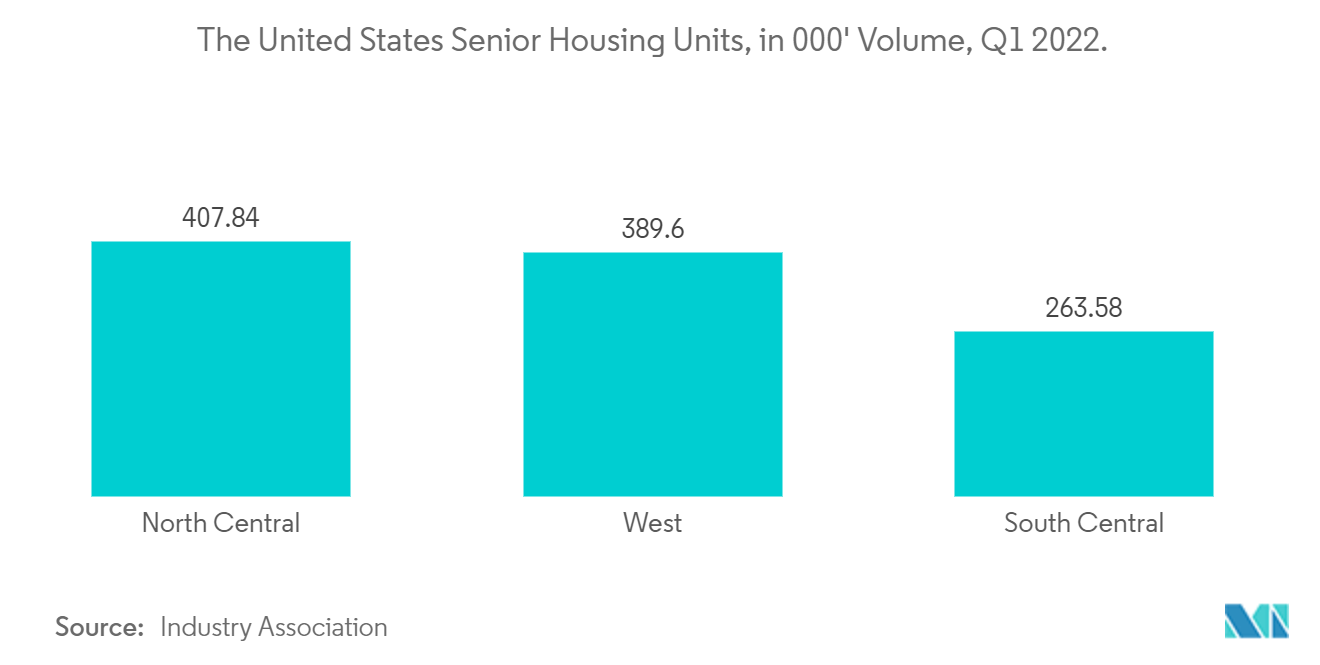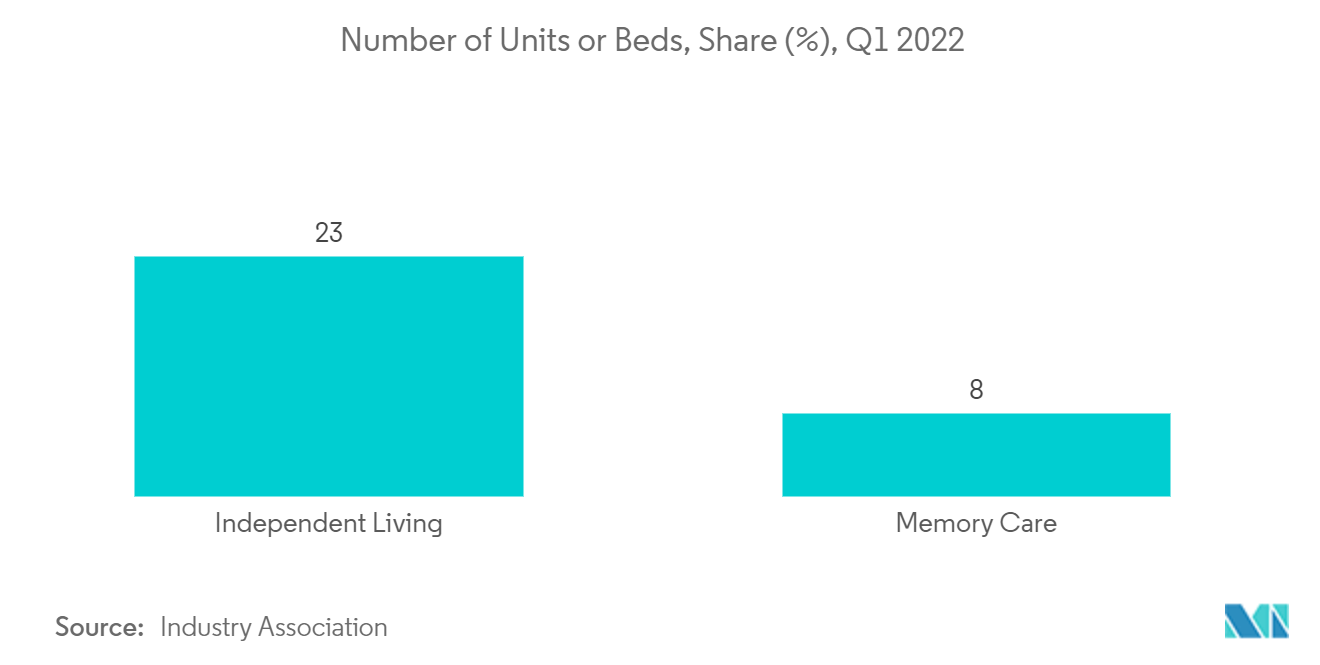Market Trends of United States Senior Living Industry
This section covers the major market trends shaping the US Senior Living Market according to our research experts:
Senior Housing Witnessing Increased Demand
- The senior housing sector is experiencing significant growth and is popular for real estate investments. The demand for this sector is driven by a growing aging population in the country and their healthcare needs.
- Furthermore, a rise in the country’s citizens' life expectancy calls for increased senior housing investments to support a longer-living population. According to the Centers for Disease Control and Prevention, the average life expectancy in the country was 76.4 years in 2022, which will increase to 85.6 in 2060 due to medical innovations, prevention programs, and support and medication for chronic diseases.
- As rental rates rose at the highest rate in NIC history year over year, senior housing occupancy rates climbed for the fifth consecutive quarter. In the third quarter of 2022, senior living occupancy rose one percentage point to 82.2%, showing that the post-Covid-19 recovery is progressing gradually.
- According to NIC, the demand for assisted living has increased more than the demand for autonomous living. Although occupancy in assisted living facilities has not yet returned to pre-pandemic levels, this is because additional inventory was added during the pandemic.
- Boston and Minneapolis had the greatest occupancy rates in the third quarter of the 31 major NIC MAP Vision metro markets, at 88.3% and 86.2%, respectively, while Houston, Atlanta, and Cleveland had the lowest rates, at 76.8%, 78.1%, and 79.1%, respectively.
- Strong demand that outpaced inventory development was the primary driver of the increase in 3Q. In the 31 NIC MAP Vision main markets as of the quarter, there were only 2,400 occupied senior living units less than pre-pandemic levels.

Nursing Care Communities Experiencing Significant Growth
- The demand for nursing care is increasing significantly due to the increase in the baby boomer generation, born before World War 2, in the United States. This ageing population requires higher health support and more senior living communities.
- Furthermore, the nursing community sector is driven by severe health conditions of senior citizens, such as chronic heart diseases, Alzheimer’s and dementia, arthritis, and high blood pressure, which need to be monitored by skilled nursing staff.
- In addition, they provide typical services, including nursing care, 24-hour supervision, three meals a day, and assistance with everyday activities. These centres also provide rehabilitation services, such as physical, occupational, speech therapy, etc.
- On the other hand, the prices of the beds increased by 22%, with expenses averaging USD 3320 per bed for nursing care. In addition, a major number of service units or beds are contributed with nursing care, amounting to more than 46%, which accounts for approximately 43,725 beds with the skilled nursing staff.

